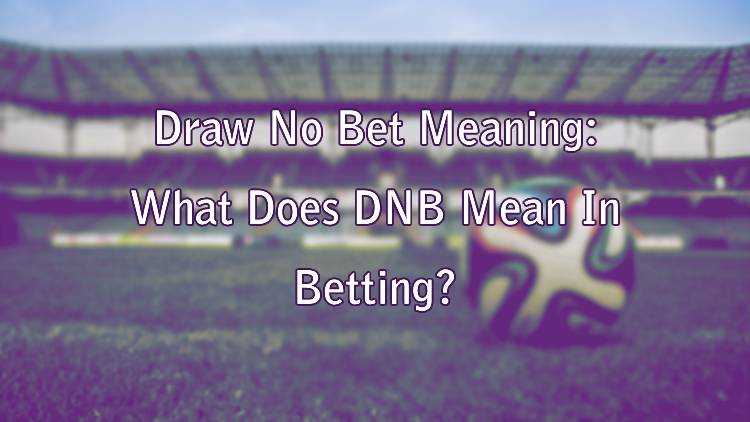
Draw No Bet, often abbreviated as DNB, is a popular betting term in the world of football betting. Essentially, DNB is a type of bet where your stake is returned if the match ends in a draw. The primary objective of a DNB bet is to eliminate the possibility of a draw from the betting equation, thus increasing the chances of a potentially successful bet.
What Does DNB Stand For In Betting?
DNB stands for Draw No Bet. It’s a betting market offered by most bookmakers, particularly for sports that have a high likelihood of ending in a draw, such as football. The main advantage of DNB is that it provides a safety net for bettors. If the match ends in a draw, the bettor gets their stake back, hence the term 'No Bet'.
Draw No Bet Meaning
DNB, or Draw No Bet, has a straightforward meaning. If you place a DNB wager, you bet on either the home or away team to win. If the game ends in a draw, your stake is refunded, hence the 'No Bet' part of the term. It's a way of betting that reduces the usual three outcomes (home win, away win, draw) of a match to just two outcomes.
Home Draw No Bet
A 'Home Draw No Bet' means you are betting on the home team to win. If the home team wins, you win the bet. If the game ends in a draw, your stake is returned. However, if the away team wins, you lose your bet.
Away Draw No Bet
On the other hand, an 'Away Draw No Bet' means you are betting on the away team to win. If the away team wins, you win the bet. If the game ends in a draw, your stake is returned. But, if the home team wins, you lose your bet.
1st Half Draw No Bet
In a '1st Half Draw No Bet', you are betting on which team will be ahead at the end of the first half. If the team you bet on is leading at half-time, you win. If the first half ends in a draw, your stake is returned. If the team you didn't bet on is leading at half-time, you lose your bet.
How Does Draw No Bet Work?
DNB betting works by removing the draw from the equation. In football, for instance, instead of having three potential outcomes (home win, away win, or draw), you now have only two. You bet on either the home team or the away team to win. If the match ends in a draw, you don't win, but you get your stake back.
Draw No Bet Example
Let's consider a practical example to understand DNB better. Suppose you want to bet on a match between Team A (home team) and Team B (away team). You decide to place a DNB bet on Team A. If Team A wins, you win the bet. If the match ends in a draw, you get your stake back. But if Team B wins, you lose your bet.
Is Draw No Bet The Same as Double Chance?
Although both DNB and Double Chance bets can provide a potential safety net for bettors, they are not the same.
In a Double Chance bet, you cover two of the three possible outcomes of a match. You can bet on the home team to win or draw, the away team to win or draw, or either team to win. This means you win if any of the two outcomes you bet on occur.
Meanwhile, in a DNB bet, you only cover one team to win, with the draw acting as a safety net to potentially refund your stake.
The Double Chance bet gives you two chances to win but at lower odds, while DNB offers higher odds but only one chance to win with a refund on a possible draw.
In summary, Draw No Bet is a useful betting strategy that may be particularly useful if betting on matches where a draw is a high possibility. However, as with all betting strategies, it's essential to do thorough research and make informed decisions when placing your bets.
